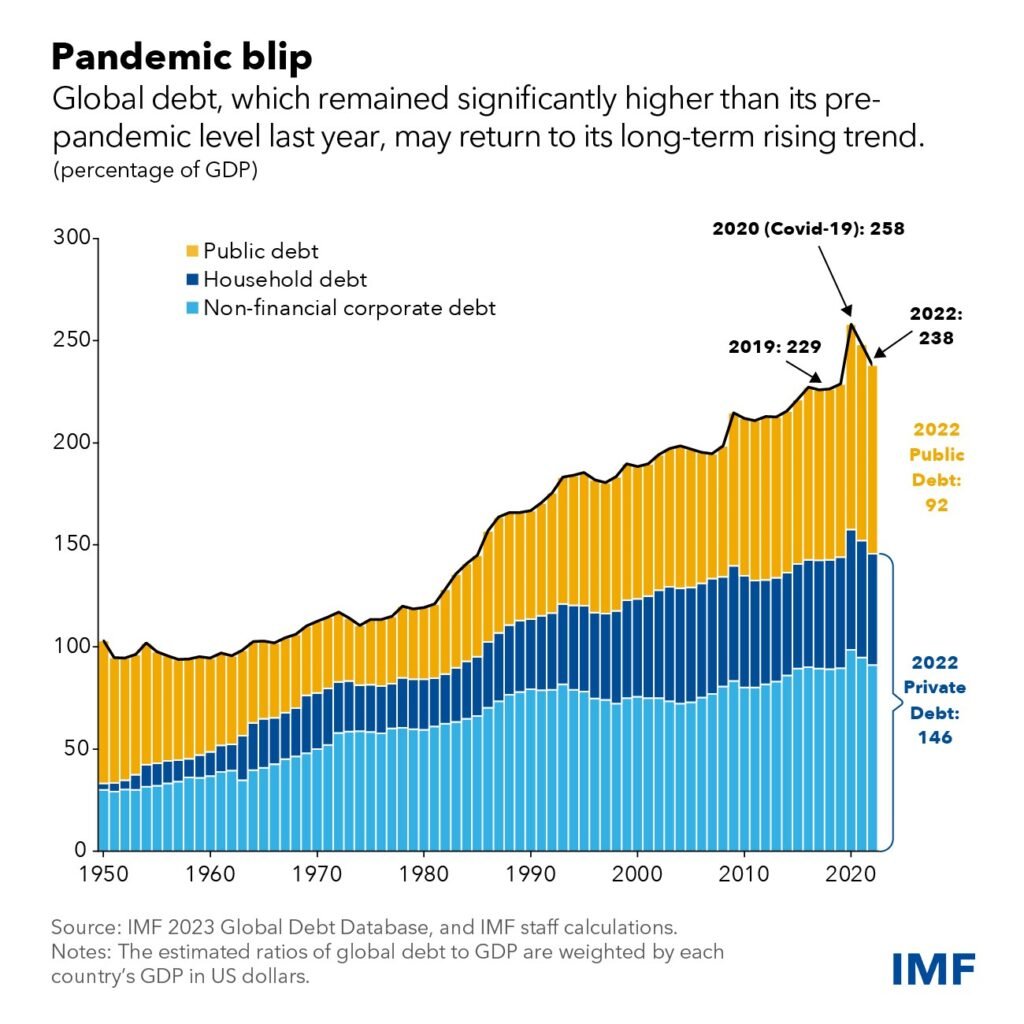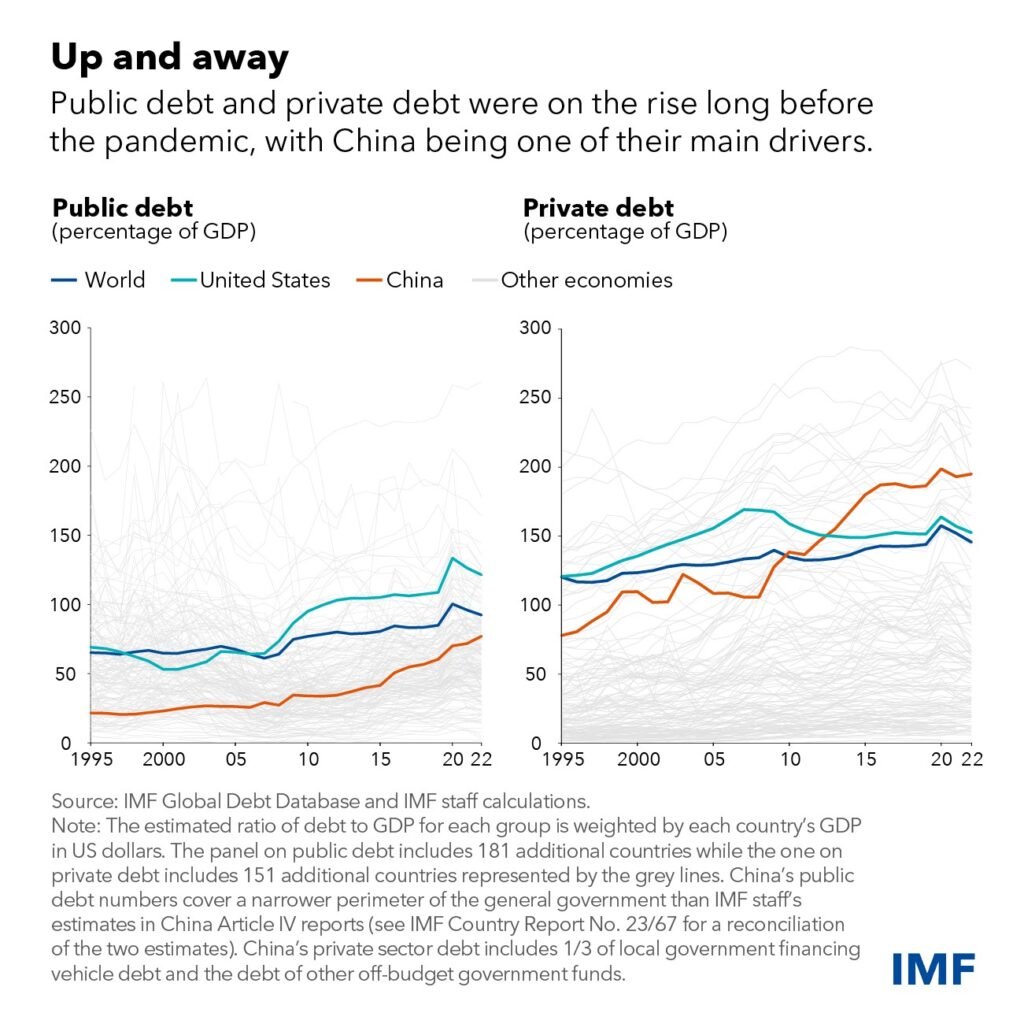High global debt sustainability remaining a concern
The most recent update to our Global Debt Database shows that the global debt load decreased for the second year in a succession, albeit staying above its pre-pandemic high. Last year, the overall debt was 238 percent of the world’s gross domestic product, nine percentage points more than in 2019. Debt reached $235 trillion in US dollars, $200 billion more than it did in 2021.
Over the coming years, policymakers must remain steadfast in their commitment to maintaining debt sustainability.

The level of public debt persisted despite the economic recovery that began in 2020 and the significantly higher-than-expected inflation rate. While many governments halted pandemic-related fiscal support, they continued to spend more to spur economy and respond to surges in the prices of food and energy, which resulted in fiscal deficits that maintained the levels of public debt high.
According to our most recent Global Debt Monitor, as a result, public debt decreased by barely 8 percentage points of GDP during the previous two years, countering just around half of the rise caused by the pandemic. Private debt, which comprises debt held by households and non-banking corporations, decreased by 12 percentage points of GDP at a quicker rate. Even still, the drop was insufficient to completely eradicate the epidemic surge.
Forces in debt trends
Global debt-to-GDP ratios had been rising for decades prior to the epidemic. By the end of 2022, the global public debt had tripled since the middle of the 1970s and accounted for 92% of GDP. Moreover, private debt increased to account for 146% of GDP.

Since borrowing has outpaced economic growth in recent decades, China has had a major role in the rise in global debt during the longer time frame between 1960 and 2022. While China’s total debt ($47.5 trillion) is still less than that of the United States (almost $70 trillion), it has increased to around the same level as the US in terms of GDP. With regard to corporate non-financial debt, China holds the highest percentage globally, at 28 percent.
Debt in low-income developing countries also rose significantly in the last two decades, albeit from lower initial levels. Even as their debt levels, especially private debt, remain on average relatively low compared to advanced and emerging economies, the pace of their increases since the global financial crisis has created challenges and vulnerabilities. More than half of low-income developing countries are in or at high risk of debt distress, and about one fifth of emerging markets have sovereign bonds trading at distressed levels.
Why does global debt matter?
Emerging and developing economies have been the worst hit by previous debt crises, World Bank research shows.
To meet debt payments, at least 100 countries will have to reduce spending on health, education and social protection, the IMF estimates.
If countries default on their debts, it can cause panic on financial markets and economic slowdowns.
For businesses, meeting repayments on high levels of debt can mean less money is available to invest in jobs and expansion. Insolvency is also a risk for businesses that are unable to pay back their loans.
For households, high levels of debt can force them to cut some areas of spending, such as food or fuel. Low-income households are most at risk, the IMF says.
What do experts say about global debt?
When low-income countries get into debt distress, it’s associated with “protracted recessions, high inflation and fewer resources going to essential sectors like health, education and social safety nets, with a disproportionate impact on the poor,” the World Bank says.
Debt distress is when a country is unable to fulfil its financial obligations, such as repayments due on its debt. The IMF and World Bank believe 60% of low-income countries are at or near this point.
More than 80% of the 2023 debt build-up has come from the developed world, reports Reuters, with the US, Japan, the UK and France registering the largest increases. Among emerging markets, the biggest rises came from China, India and Brazil.

